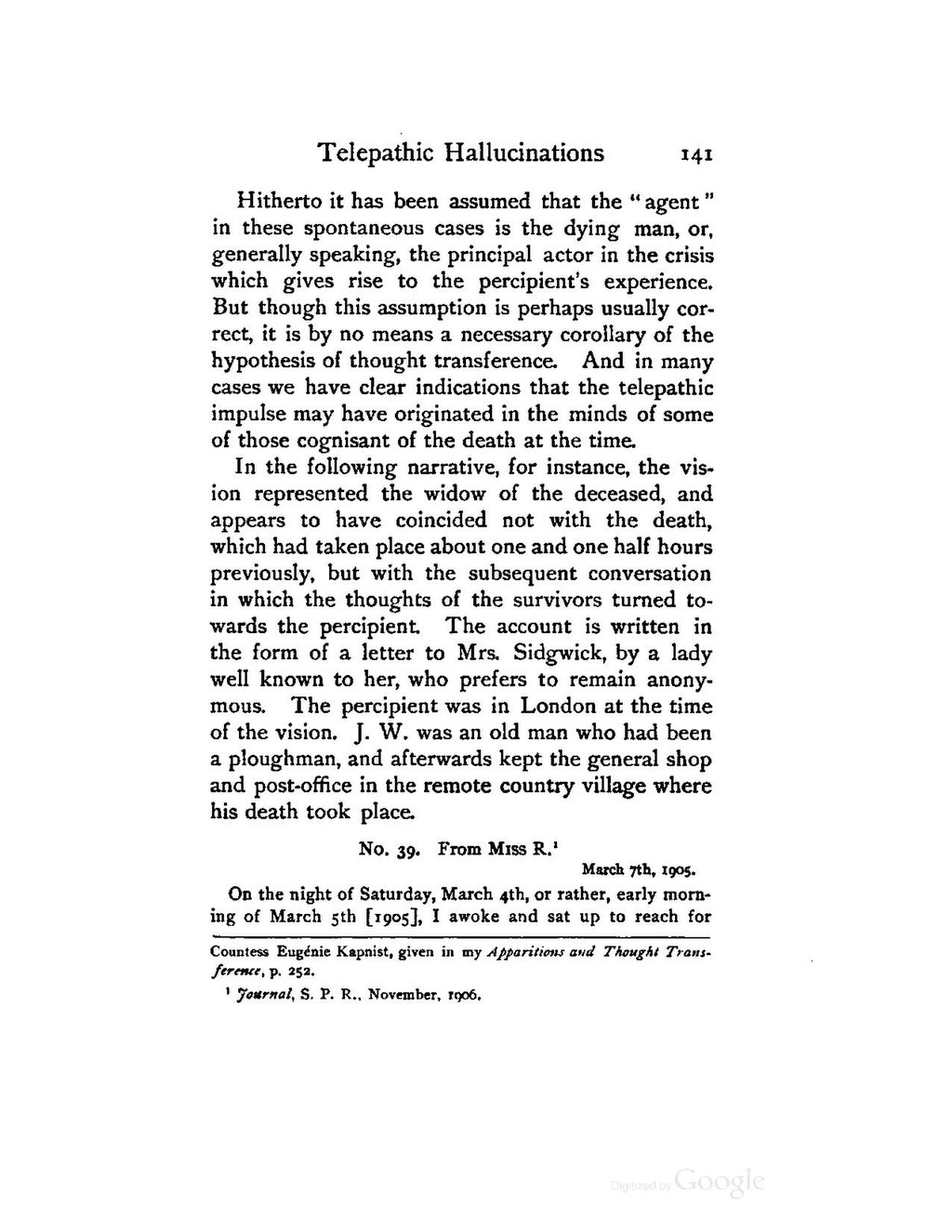Hitherto it has been assumed that the "agent" in these spontaneous cases is the dying man, or, generally speaking, the principal actor in the crisis which gives rise to the percipient's experience. But though this assumption is perhaps usually correct, it is by no means a necessary corollary of the hypothesis of thought transference. And in many cases we have clear indications that the telepathic impulse may have originated in the minds of some of those cognisant of the death at the time.
In the following narrative, for instance, the vision represented the widow of the deceased, and appears to have coincided not with the death, which had taken place about one and one half hours previously, but with the subsequent conversation in which the thoughts of the survivors turned towards the percipient. The account is written in the form of a letter to Mrs. Sidgwick, by a lady well known to her, who prefers to remain anonymous. The percipient was in London at the time of the vision. J. W. was an old man who had been a ploughman, and afterwards kept the general shop and post-office in the remote country village where his death took place.
No. 39. From Miss R.[1]
- ↑ Journal. S. P. R. November. 1906.
Countess Eugénie Kapnist, given in my Apparitions and Thought Transference p. 252.
